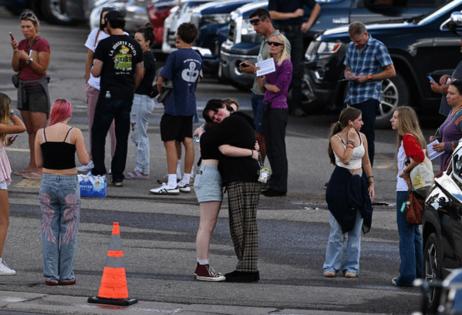Editorial: Recent shootings connected by the internet's darkest corners
Published in Op Eds
A 16-year-old gunman shot two students at his Denver-area high school last Wednesday before killing himself, a terrible act of violence that received fleeting attention due to the shooting death of conservative activist Charlie Kirk in Utah at nearly the same time.
While the crimes were starkly different, the two suspects shared a common philosophy: a devotion to the darkest corners of the internet, where no joke is off limits and mass killers are glorified for their heinous acts. As a piece in The Atlantic this month makes clear, “The mass shooters are performing for one another,” a conclusion with deeply worrisome implications for our youth and our communities.
The gruesome shooting death of Kirk, a 31-year-old conservative commentator, at an on-campus event last week inflamed a cycle of allegations and recrimination among politicians and the public alike. While the overwhelming response was one of sorrow and condemnation for acts of political violence, others sought to pigeonhole the shooter’s beliefs in an attempt to understand why the 22-year-old suspect would target Kirk.
That will likely be a challenge without resolution. The early picture of the shooter is that of a nihilist rather than someone who can be easily labeled left or right, liberal or conservative. He etched messages on the bullet casings that drew from places such as 4Chan, an online message board that proudly rejects moderation and celebrates those extreme, antisocial beliefs.
In 2022, 4Chan users were among the most prolific amplifiers of the video taken by the 18-year-old shooter in a Buffalo supermarket showing the grisly murders of 10 people in what authorities concluded was a deliberately racist attack. A manifesto posted by the shooter said he was inspired by 4Chan posters, who encouraged the young man to turn his abhorrent views into violent action.
The Buffalo shooter also made reference in that document to the 2019 massacre in Christchurch, New Zealand, in which a man livestreamed his attack on two mosques that killed 51 people. The suspect in that case was a white supremacist who wrote neo-Nazi slogans on his weapons and magazine clips, and his violence has inspired several copycats — including by many young, disaffected men who find community in radical hotbeds such as 4Chan.
The recent school shooting in Minnesota followed a similar pattern. Though authorities, including the U.S. Department of Justice, zeroed in on the shooter’s transgender identity, it’s arguably more relevant that, like other mass shooters, the weapons were again scrawled with references to previous mass killers (including the Christchurch shooter and the teens who carried out the Columbine High School attack in 1999) and memes familiar to the perpetually online.
Dave Cullen, who authored the book “Columbine,” wrote in the Atlantic last year that at least 54 mass shootings, crimes that killed nearly 300 people and wounded more than 500, included references to Columbine from the shooters. “Mass shootings didn’t start at Columbine High, but the mass-shooter era did,” Cullen wrote.
“The idea, in other words, is to motivate someone else to become a shooter — by creating a public manifesto, leaving a trail of digital evidence, and even livestreaming attacks in some cases,” Charlie Warzel wrote in The Atlantic this month. “The goal of these attacks is to join the lineage of mass shooters and for the next killer to inscribe their name on a gun before an attack.”
That leaves investigators, the media and the public in a difficult spot. It’s important, as much as possible, to identify the motivations that see these young people transition from online boasts to serious threats, but it requires restraint and an understanding that more attention heaped on the suspects could, in turn, inspire others to carry out similarly depraved acts.
But the line that connects these shooters runs through the dregs of the internet. That should have parents, educators and anyone who serves as a mentor or role model asking about online behavior and monitoring what young people see on their screens.
Doing so may well prevent a tragedy, and America has already seen more than its share.
_____
©2025 The Virginian-Pilot. Visit at pilotonline.com. Distributed by Tribune Content Agency, LLC.
























































Comments